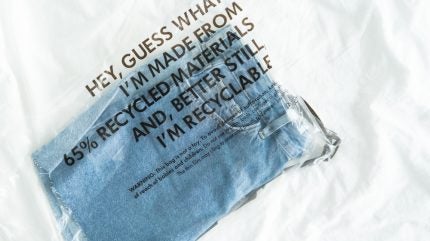How the EU’s textile strategy will transform the fashion industry

HOW THE EU’S TEXTILE STRATEGY WILL TRANSFORM THE FASHION INDUSTRY
The EU Commission's 2030 Vision for Textiles means
products not built with recyclability in mind should not be sold in the EU
market in six years' time.
The
EU’s Strategy for Sustainable and Circular Textiles sets out a
plan – including concrete action points – to ensure that all textile
products sold in the EU are long-lasting, recyclable, made as much as possible
of recycled fibres, free of hazardous substances and produced in respect of
social rights and the environment by 2030.
Marie-Hélène Pradines, head of the European Commission’s Unit for Tourism and Textiles (DG GROW) told attendees of a webinar hosted by ITMA – an online sourcing platform for the textile and garment industry – that the rules aim to ensure all textiles have an eco-design.
From design to manufacturing, sustainability and circularity are the guiding principles,” Pradines explained. She added that products not built with recyclability in mind should not be sold on the EU market beyond 2030.
She also pointed out this vision could gradually guide the rest of the world towards a greener Europe.
Deputy head of the From Waste to Resources Unit (DG ENV) at the European Commission, Karolina D’Cunha, agreed stating: “It is essential that we address the design of products.”
She stressed this is particularly important from a waste management point of view as any toxic materials included in a textile product will cause issues when the items reach their end-of-life.
“If they’re not designed for recycling, we will have increased problems with waste management so I think it is really revolutionary that we are addressing this design stage now through the new regulations on the eco design of products,” D’Cunha added.
The EU’s Waste Framework Directive also urges member states to establish a registry of all companies making products available in the EU market. These producers will have “extended producer responsibility” D’Cunha explained and will have to pay a financial contribution toward the cost of textile waste management.
The fee will be “eco modulated”, which means the more reusable or recyclable a product, the lower the fee, which will incentivise fashion companies to move towards circular models.
Another concern raised by the vision is the issue of used textile waste being exported to countries outside of the EU where it often ends up in landfill.
D’Cunha said the fees from the responsibility schemes will also be used to fund inspections on outgoing shipments to verify whether or not it is waste.
However, D’Cunha also noted the requirements for extended producer responsibility are still a way off from enforcement with member states given 18 months to bring the rules into effect. “There’s still quite some time for products to get ready for those new provisions,” she said.
Alessandra Moser, policy advisor to MEP Alessandra Moretti pointed out the 2030 regulations will help reduce the fashion industry’s reliance on fossil fuels: “I am convinced the textile strategy can pave the way for the fashion industry to thrive sustainably, and balance its economic role with its environmental and social responsibilities.”
Moser added that Digital Product Passports could also play a “crucial role” in promoting circularity as they will give consumers information about how a product has been manufactured and whether or not it contains fossil fuels.
“The regulations will, in my view, radically change the way in which industry will operate, showing how to manage the entire lifecycle of a product, including end of life,” she stated.
Pradines highlighted that textile products that do not meet minimum performance requirements from an eco standpoint should not be allowed in the EU market.
The new regulations on waste will also cover unsold consumer products, including apparel. Moser told attendees that a ban on the disposal of unsold products will come into effect in 24 months although she admitted it was still too early to know how the rules would work in practice.
“What we can say is that we know the Commission has asked the Commission’s Joint Research Centre to launch work on a preparatory study on the requirements for textiles,” Moser explained before adding that an impact assessment and a delegated act will follow with more specifications.
